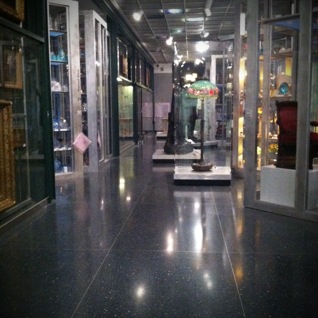Some of the coolest kid lit is by Ruth Chew. I love, love, loved her elegant books when I was little. They are fun, and sweet, and simple and usually about a brother and sister who live in Brooklyn, walk to and from Prospect Park on their own, have sandwiches packaged in paper by their mom, and encounter magic. Things that we experience as kids leave deep impressions; whenever I think of Prospect Park there is -- even if it's fleeting -- a thought about those books... and me as an elementary school child thinking about Brooklyn, and very simple magic, like a measuring tape that can make things bigger, or scissors that can snip things smaller.
Today's field trip was to Prospect Park. When we first came up from the subway The Boy kept saying something that we all thought was, "The guy is scaring me." I looked for a pedophile or ranter or ranting pedophile that he might have spotted. The Girl looked at the statue we were coming up on and said, "Well, at least a fig leaf is covering it..." After a bit of similarly ridiculous commentary we finally all got on the same page: it was the SKY that was scaring him. There were no buildings to keep it in check. Obviously, we leave the city often, but perhaps there's usually a more gradual fading away... or perhaps the sky today just seemed particularly expansive.
Another my-kids-are-growing-up-in-an-urban-environment moment was when The Girl gasped and said, "What is that smell? I love it!" A lawn mower had just passed. It was the sharp and distinct smell of just-cut grass.
We stumbled upon the Camperdown Elm, and we are so glad that we did (read cool article here).
And visited the outside of the Lefferts House. ("Lefferts house has been a witness to a landscape constantly changed by people. The Lefferts family house was built using trees that grew in the area. Then the house became the anchor for a farming and grazing business that transformed the land. Finally, the house itself had to make way, the landcape was changing once again, into a modern city.")
We also went to the zoo. Personally, I didn't care for it as much as the Central Park zoo, even though the two are very similar. The kids liked it -- The Girl will never hear an even slightly critical remark regarding anything with animals, and The Boy loved a turkey (he named Rockyroad) and an emu -- that he said he would really like for a pet, but he would use some Alberto V05 hair styling gel and a comb to fix the weird hair. The Sister and I thought this was hilarious: Judd the Red Chicken -- Stylist to the Emus.
The carousel was great; we all rode it.
And then we headed over to the Brooklyn Museum.
We particularly liked roaming about the visible storage.
We came home tired, but I hope that something lovely, if not magical, will stick in the beings of the brother and sister team that headed to Prospect Park today.


















































